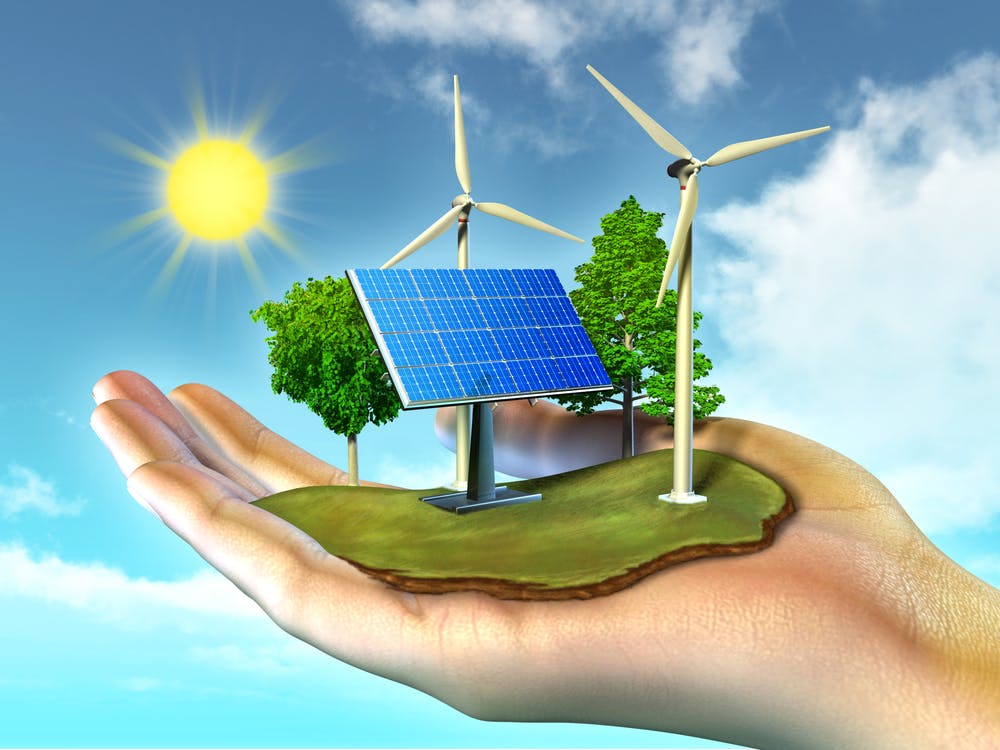
- All
- Tools
- Analytics
- Technical Analysis
- Trading
- Blockchain
- DeFi
- Guides
- Company News
- Educational
- Opinion
- Price Predictions
- Market News
- News
- Trading cases
- Practical guides
- Exchanges
- Trading signals
- Cryptocurrency
- Crypto bots
- Other
Become a crypto master
Learn everything about crypto,
trading and bots

Robots, Artificial Intelligence and Blockchain
Start Trading on 3Commas Today
Get full access to all 3Commas trading tools with free trial period

Today, distributed ledger technologies have penetrated deeply into many areas of our lives. Despite their young age, blockchains are already seen as an alternative to many older systems or processes, and the pace of transition to digital society is accelerating.
In today’s article, we will talk about the implementation of the blockchain in the sphere of robotics, the interaction of the blockchain with artificial intelligence, and discuss the role of distributed systems in robotization processes.
Blockchain and robotization
Artificial Intelligence technology is essentially trying to get computer hardware and software to emulate how the human brain works, and use data to make decisions like a human would, albeit at a much faster rate. Imitating human intelligence will be essential in order for an AI to make rational and informed decisions leading to task fulfillment.
Generally distributed systems, and blockchain in particular, have a number of advantages and features that can be useful in building robotic systems:
- Immutability of data entered in the blockchain;
- Decentralized data storage;
- Digital access identification;
- Data access level regulation;
- Data security and privacy.
The above properties of the blockchain, when integrated with AI, can improve the security, flexibility, autonomy, and profitability of robotic operations, and become indispensable when combining multiple robotic systems into one.
Already in 2017, Castello Ferrer, a researcher and engineer at MIT Media Lab was implementing the ideas of combining AI and Blockchain. He specialized in “swarm” robotics: the integration and collaboration of large groups of computers capable of cooperating to perform a specific task. This is the case with food computers, robotic greenhouses that can generate different climate conditions for growing products anywhere in the world.
Swarm robotics involves deploying individual robots with artificial intelligence to interact with the environment and other related robots.
Castello integrated blockchain into the “swarm” system, thus solving arguably the most important problems of building large groups of computers – coordinated interaction between robots and improved security of such systems. Coordinated actions between several robots are performed by voting and sending transactions containing the choice of future actions. When a consensus is reached, the selected action is performed by all the robots on the network. Blockchain provides security for such systems through consensus protocols that regulate the future behavior of the robots. Due to distributed systems, the information generated by robotic systems is processed and compared faster, which improves network performance.
Now, there are tools and technologies to ensure interaction between drones. An example is the so-called Drone Light Show, where drones, using GPS RTK technology and geo-tags on the ground, project different images. The drones are used to conduct geological exploration and aerial photography, as well as to perform search and rescue operations.
It should be noted that drones are used by both end-users and insurance companies, internet providers, and topographic data services. Blockchain is able to accelerate the processes of interaction and decision making. An important aspect of the interaction between blockchain and AI is to ensure the security of data obtained by robots. Blockchain provides security for data transmission and storage through cryptographic digital signatures and public-key cryptography.
“Relationships” between robots
If we consider the interaction between nodes from the AI’s point of view, then a blockchain can be an excellent solution for building a robot economy. The interaction of robots in physical space is built on economic principles. Blockchain can become the link that allows groups of robots to interact with each other without the intervention of third parties, e.g., people.
An example of such interaction is a solution from Airalab – a system of renting autonomous drones using Ethereum smart contracts, which can be used, for example, by streaming companies for shooting events.
Another example of using smart contracts is a successful experiment to hire a drone to achieve a remote target without an operator. With an Ethereum smart contract, the user was able to interact directly with the robot and use the filming service.
The world’s largest wholesale and retail network Walmart has applied for a patent for the drone data transmission system: identification numbers, altitude, speed, flight routes, battery charge level, and payload. Blockchain allows you to store information in any format: an extensive list of commands, navigation data, or maps. Data encryption and cryptographic elements ensure reliable communication and coordination.
Prospects for development
The development of robotics takes place in all spheres of human activity. According to a number of studies, the total market volume of robotics is anywhere between 15 and 30 billion dollars. BI Intelligence’s “The drones report” research states that the realized profit from the sale of drones in 2021 will be about $12 billion.
Today we can observe an increase in demand for domestic robots. This is due to the intensive development of IoT-technologies. The domestic robot market volume reached $3 billion in 2018. Automation of production led to high demand for industrial robots; the world market volume in 2017 amounted to almost $17 billion.
The robotics market is one of the most promising and rapidly developing. The development of blockchain technology, its integration with artificial intelligence and the “Internet of Things”, simplifies the interaction between robots and improves the security of data storage, sharing, and management.
Using blockchain as a platform or system for coordinating AI components, whether data or algorithms, it is possible to make such solutions more transparent to observers.
Blockchain for coordination and collective decision-making opens up the possibility of automation of home systems, such as drawing the curtains or activating lighting or far more complicated tasks such as search and rescue operations using drones.
It should also be noted that blockchains and AI complement each other. Thus, artificial intelligence can help in decision-making by automating and optimizing the work of the blockchain.
The prospects for combining blockchain and AI in the field of robotics are increasing. But it is not yet possible to speak about the significant impact of ready-made or developing solutions on our lives.
As we navigate through 2023, the dynamic amalgamation of blockchain technology and robotics continues to reshape the technological landscape, offering unprecedented solutions and innovative approaches across various sectors. The integration of blockchain into the realm of robotics is evolving, paving the way for secure, transparent, and highly efficient systems. This article provides insights into the implementation of blockchain within robotics, examining its interaction with artificial intelligence (AI), and exploring the significance of distributed systems in the processes of robotization.
Integrated Revolution: Blockchain Meets AI
The convergence of blockchain and AI is a revolutionary stride in the tech world, where the decentralized nature of blockchain complements the analytical prowess of AI. In robotics, blockchain ensures secure and immutable record-keeping, providing a transparent trail of data transactions and interactions. This unison empowers robots with the ability to make autonomous decisions based on reliable and incorruptible data, creating a conducive environment for advancements in robotization processes.
Blockchain in Robotics: A Pillar of Trust and Efficiency
In 2023, numerous industries are witnessing the profound impact of blockchain in robotics, addressing the need for trust and traceability within autonomous systems. Robotics leverages blockchain technology to validate data exchanges and interactions, establishing trust between unknown and disparate entities in a network. The transparent and tamper-evident nature of blockchain also assists in resolving disputes, minimizing risks, and ensuring the authenticity of information within the robotic ecosystems, which are becoming increasingly complex and interconnected.
Symbiotic Benefits: Enhancing Operational Excellence
The integration of blockchain technology within robotics has given rise to symbiotic benefits, augmenting the operational capabilities of robotic systems. The immutable nature of blockchain provides a secure platform for robots to execute tasks with minimized errors and reduced operational downtime. Moreover, the decentralized ledger facilitates real-time data sharing, enabling robots to adapt and learn from evolving environments and scenarios swiftly.
Furthermore, smart contracts enabled by blockchain automate and enforce agreements within the robotic ecosystem, ensuring compliance and enhancing efficiency. These autonomous, self-executing contracts streamline operational processes, reducing the reliance on intermediaries and mitigating the chances of disputes and inconsistencies.
Future Outlook: Distributed Systems and Robotization
The role of distributed systems in robotization processes is transformative, laying the foundation for decentralized robotics, which is pivotal in 2023. Distributed ledger technology fosters collaborative innovations, allowing developers and stakeholders to contribute to the development and refinement of robotic technologies. The decentralized approach ensures resilience and adaptability, catering to the ever-growing demands for scalable and versatile robotic solutions.
Blockchain’s interaction with AI, within the context of robotics, is not merely symbiotic; it is revolutionary, providing a canvas for innovators to paint a future where reliability, transparency, and efficiency are the norms. This integration is sculpting a new age where the capabilities of robotics are continually being elevated, driven by the secured and decentralized architecture of blockchain technology.
Conclusion
The intermingling of blockchain and robotics in 2023 is a beacon of transformation, illuminating pathways for innovative breakthroughs and sustainable developments in technology. The secure and transparent attributes of blockchain amalgamated with the intelligence and adaptability of robotics are redefining standards and pushing the boundaries of what is achievable. The future holds immense potential for this synergistic relationship, promising advancements that will shape the technology landscape and fuel the evolution of robotics in diverse sectors.

A proven leader, successful at establishing operational excellence and building high-performance teams with a sharp focus on value creation and customer success.





